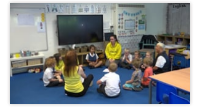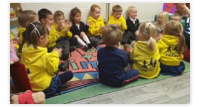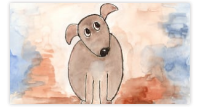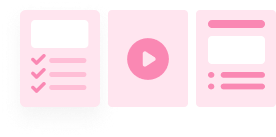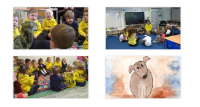Ourselves & Our Friends Level: Early Grades - Listening, appraising & movement
Music Lesson Description
A Dance With Friends! (structure)
Here's a circle dance with different actions that fit with each section of the music, helping to draw attention to the structure of the music. The music is from Rondo Alla Turca by Mozart, the second movement from his piano Sonata in A major. A rondo has a tune that keeps coming back at least three times, interspersed with different tunes, but I have not included the whole movement here, for the sake of simplicity.
When I started teaching this dance I thought the children would never get it, yet after just a few tries they were managing pretty well and loving it! The idea is that doing a different movement to each part of the music helps draw attention to its structure.
Free Dance
After the structured dance, I asked the children to do their own dance and there's an interesting variety of responses. One little boy who had just started nursery was a bit bewildered and walked around but, towards the end you can see one of the older boys (having slid around a bit previously) spontaneously clapping in time with the pulse of the music.
Hide and Seek (tempo)
Ask the children to find one of these things, hidden around the room (hide more objects than children eg 6 white spoons, 3 pink mice, 6 blue beanbags)
For this game, play The Runaway Rocking Horse by Edward White. First the children listen, without moving, to the slow introduction. When the tempo becomes fast, they go and seek. When the music stops they sit down with what they have found.
To put away what they have found, the children listen again to the slow introduction then put the objects away in the right place as the quicker music plays. If the music is still playing, they sit down and watch the video. The music is played on an organ, which is interesting for the children to watch as many will not have seen an organ.
Scary Hide and Seek! (tempo)
The children watch the video of Hide and Seek by Schumann, played on piano, looking out for the eyes peeping from the trees! The could watch again and count how many pairs of eyes they see. Where was the quickest part of the music?
Quick and Slow Sounds (tempo)
Every child needs something that makes a sound - an instrument, a 'found sound' such as a rustly bag, or body sounds eg clapping hands. The teacher is the conductor - when you make big, slow hand movements, the children make slow, smooth sounds and when you make quick, jumpy hand movements they play quickly. Keep changing randomly from one to the other.

